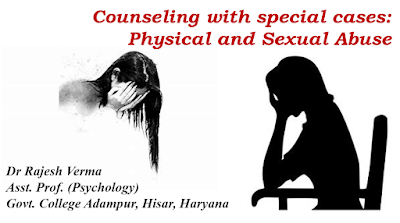परिभाषा
टू-वे एनोवा, जिसे दो कारक एनोवा के रूप में भी जाना जाता है, एक सांख्यिकीय तकनीक है जिसका उपयोग निरंतर (Continuous) निर्भर चर (Independent variables) पर दो श्रेणीबद्ध स्वतंत्र चर (Categorical independent variable) के प्रभाव का विश्लेषण करने के लिए किया जाता है। यह वन-वे एनोवा के सिद्धांतों को उन स्थितियों तक विस्तारित करता है जहां परिणाम को प्रभावित करने वाले दो स्वतंत्र चर या कारक होते हैं।
कारक: टू-वे एनोवा में, दो कारकों या स्वतंत्र चर का अध्ययन किया जाता है। ये कारक विभिन्न उपचारों, स्थितियों या स्तरों का प्रतिनिधित्व कर सकते हैं जिनका किसी प्रयोग में प्रतिभागियों या विषयों को सामना करना पड़ता है।
मुख्य प्रभाव (main effect): टू-वे एनोवा दो मुख्य प्रभावों का आकलन करता है: आश्रित चर पर एक कारक का प्रभाव जबकि दूसरे कारक की अनदेखी करना, और इसके विपरीत। उदाहरण के लिए, यदि एक कारक आहार का प्रकार है और दूसरा व्यायाम का स्तर है, तो मुख्य प्रभाव यह आकलन करेगा कि प्रत्येक कारक व्यक्तिगत रूप से वजन घटाने को कैसे प्रभावित करता है।
इंटरेक्शन प्रभाव (interaction effect): मुख्य प्रभावों के अलावा, टू-वे एनोवा इंटरेक्शन प्रभाव का भी मूल्यांकन करता है, जो यह पता लगाता है कि क्या एक कारक का प्रभाव दूसरे कारक के स्तर पर निर्भर करता है। इस अंतःक्रिया (interaction) से पता चलता है कि आश्रित चर पर दो कारकों का संयुक्त या सम्मिलित प्रभाव है या नहीं। उदाहरण के लिए, दवा की प्रभावशीलता पर एक अध्ययन में, यदि दवा की प्रतिक्रिया रोगी के आयु समूह के आधार पर भिन्न होती है, तो अंतःक्रियात्मक प्रभाव दिखाई देगा।
मान्यताएं/धारणाएँ (Assumptions): अन्य पैरामीट्रिक सांख्यिकीय परीक्षणों (parametric statistical tests) की तरह, टू-वे एनोवा कुछ मान्यताओं पर निर्भर करता है, जिसमें डेटा की सामान्यता (normality of data), समूहों में भिन्नताओं की एकरूपता (homogeneity of variances across groups) और प्रदत्तों की स्वतंत्रता (independence of observations) शामिल होती है। इन मान्यताओं का उल्लंघन परिणामों की वैधता (Validity) को सार्थक रूप से प्रभावित कर सकता है।
परिकल्पना (hypothesis): टू-वे एनोवा में शून्य परिकल्पना (Null hypothesis) बताती है कि दो कारकों के विभिन्न स्तरों या उनकी परस्पर क्रिया में आश्रित चर के साधनों में कोई महत्वपूर्ण अंतर नहीं है। वैकल्पिक परिकल्पना (alternative hypothesis) से पता चलता है कि इनमें से कम से कम एक साधन दूसरों से काफी भिन्न है।
स्वतंत्रता की डिग्री (degree of freedom): टू-वे एनोवा में स्वतंत्रता की डिग्री को प्रत्येक कारक के लिए स्वतंत्रता की डिग्री, उनकी अंतःक्रिया (interaction) और स्वतंत्रता की अवशिष्ट डिग्री (residual degree of freedom) का प्रतिनिधित्व करने वाले घटकों में विभाजित किया गया है।
वर्गों का योग (Sum of squares): टू-वे एनोवा में वर्गों के कुल योग को प्रत्येक कारक, उनकी परस्पर क्रिया और अवशिष्ट भिन्नता (residual variation) के कारण भिन्नता का प्रतिनिधित्व करने वाले घटकों में विभाजित किया गया है। वर्ग मानों (values of sum of squares) के इन योग का उपयोग एफ-सांख्यिकी (F-statistics) की गणना के लिए किया जाता है।
एफ-टेस्ट (F-Test): एफ-सांख्यिकी की गणना कारकों के माध्य वर्ग (mean square) या उनकी परस्पर क्रिया (interaction) को अवशेषों के माध्य वर्ग (residual mean sum of squares) से विभाजित करके की जाती है। यह एफ-परीक्षण यह निर्धारित करता है कि समूह के साधनों के बीच देखे गए अंतर सांख्यिकीय रूप से महत्वपूर्ण हैं या केवल संयोग के कारण हैं।
पोस्ट-हॉक टेस्ट (Post-hoc test): यदि समग्र एफ-परीक्षण महत्वपूर्ण परिणामों को इंगित करता है, तो Tucky's Honestly Significantly Different (एचएसडी) या बोनफेरोनी परीक्षणों जैसे पोस्ट-हॉक परीक्षण यह पहचानने के लिए किए जा सकते हैं कि कौन से विशिष्ट समूह एक-दूसरे से काफी भिन्न हैं।
व्याख्या: दो-तरफ़ा एनोवा परिणामों की व्याख्या में मुख्य प्रभावों और अंतःक्रिया प्रभावों के महत्व का आकलन करना शामिल होता है। इसमें यह समझना होता है कि प्रत्येक कारक स्वतंत्र रूप से आश्रित चर को कैसे प्रभावित करता है और जब कारक परस्पर क्रिया करते हैं तो क्या कोई संयुक्त प्रभाव होता है।
अनुप्रयोग: मनोविज्ञान, जीव विज्ञान, अर्थशास्त्र और समाजशास्त्र सहित विभिन्न क्षेत्रों में प्रयोगात्मक और अवलोकन अनुसंधान में टू-वे एनोवा का व्यापक रूप से उपयोग किया जाता है। यह शोधकर्ताओं को एक साथ दो कारकों के प्रभाव पर विचार करते हुए कई समूहों के बीच साधनों की तुलना करने की अनुमति देता है, जो जटिल संबंधों में मूल्यवान अंतर्दृष्टि प्रदान करता है।
**********











